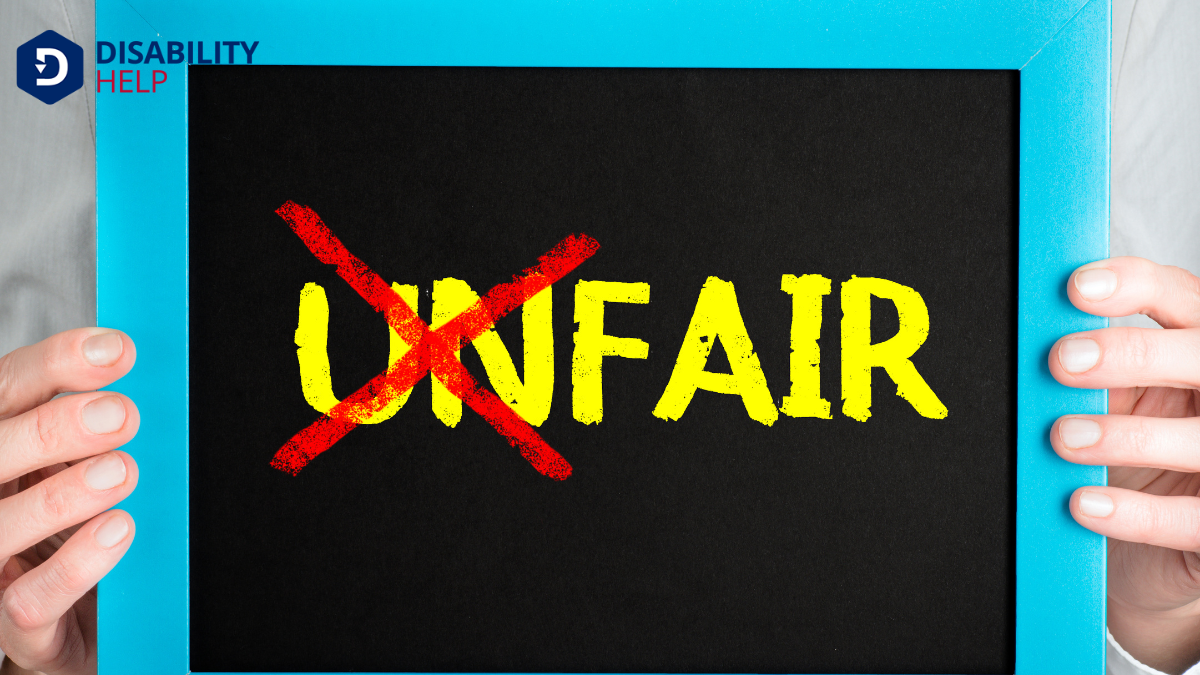Let's explore the dual entitlement rule, a concept that plays an important role in how we, as consumers, perceive pricing fairness. It fundamentally balances our expectations of fair prices against businesses' need for profits. When costs rise, we're generally okay with price increases. But when businesses hike prices without a valid reason, it can feel like a breach of trust. Curious about how this impacts pricing strategies and consumer trust?
Key Takeaways
- The dual entitlement rule involves consumer expectations of fair pricing reflecting production costs and reasonable profit margins.
- It emphasizes trust between businesses and consumers, allowing slight price increases due to costs but expecting decreases when costs drop.
- Fairness in pricing is judged by the relationship between price and perceived value, with unjustified inflation seen as unfair.
- Consumers' price expectations are influenced by the status quo and market norms, creating predictability and trust.
- Businesses benefit from aligning pricing strategies with consumer fairness perceptions to maintain trust and market stability.
The Origins of the Dual Entitlement Rule
The origins of the Dual Entitlement Rule can be traced back to the foundational principles of fairness in consumer pricing.
We've seen that consumers expect companies to set prices that reflect both the cost of production and a reasonable profit margin. If rising costs occur, consumers understand slight price increases. However, they also believe that if costs drop, prices should decrease similarly. This balance guarantees consumers feel respected and valued.
Historically, this rule emerged from the need to establish trust between businesses and consumers. As businesses, we recognize the importance of maintaining this trust.
Understanding Consumer Perceptions of Fairness

Let's explore how we, as consumers, perceive fairness in pricing, focusing on how we assess equityFairness and justice in the way people are treated, especially in the allocation of resources and op... in transactions and what we expect in value exchange.
We often judge prices not just by their absolute amounts but by how they compare to what we believe is fair or justified.
Understanding these perceptions can illuminate why certain pricing decisions feel right or wrong to us.
Fair Pricing Perceptions
How do consumers perceive pricing as fair or unfair? We often judge fairness based on the relationship between a product's price and its perceived value. If we feel that a price aligns with the quality and benefits received, we’re more likely to deem it fair.
However, if we believe a price is inflated without justification, it seems unfair. Context also matters. For instance, a sudden price increase during high demand or scarcity might feel exploitative, whereas gradual adjustments might seem reasonable.
We also consider market norms and comparisons with similar products. An understanding of these perceptions helps businesses navigate pricing strategies that maintain trust.
Ultimately, fairness in pricing hinges on transparency, consistency, and aligning with our expectations and experiences.
Equity in Transactions
Understanding what constitutes fair pricing provides a foundation for exploring equity in transactions, where consumer perceptions of fairness extend beyond mere price tags.
We recognize that consumers judge fairness based on the entire exchange experience. It’s not just about the number on the tag but also about how the price aligns with their expectations of fairness.
When we consider equity, we investigate the psychological aspects of our transactions. Consumers assess whether the value they receive matches what they give, factoring in perceived effort, quality, and market conditions.
This perception influences trust and loyalty. We must remember that fairness isn’t solely about economics; it’s about relationships and respecting consumer expectations.
Value Exchange Expectations
When we explore value exchange expectations, we must recognize that consumers don't just buy products; they invest in experiences that fulfill their perceptions of fairness. We all expect a balance between what we give and receive. It’s not just about the item's price but the value it adds to our lives.
If consumers feel shortchanged, they perceive an unfair transaction, which can damage trust. Our challenge is to understand these perceptions and guarantee our offerings align with their expectations.
Fairness in value exchange is vital. If we promise quality, service, or convenience, we must deliver. Otherwise, we risk losing consumer confidence.
The Role of the Status Quo in Pricing
Let's explore how the status quo influences consumer price expectations and shapes their perception of fairness.
When prices align with what we're used to, it can create a sense of stability and predictability, affecting our willingness to pay.
As we examine the psychological pricing effects, we'll also consider how markets respond dynamically to shifts in these expectations.
Consumer Price Expectations
As we explore consumer price expectations, it’s essential to contemplate how the status quo influences pricing perceptions.
When prices stay stable, we form expectations based on past experiences, shaping our sense of fairness and value. Our emotional responses to price changes often stem from this established baseline. We’re not alone in feeling unsettled when prices shift unexpectedly.
Here’s how the status quo affects us:
- Surprise: Unexpected price hikes can catch us off guard, triggering anxiety.
- Trust: Consistent pricing builds trust in brands, making us loyal customers.
- Disappointment: Sudden increases might lead to dissatisfaction and frustration.
- Security: Predictable prices provide a sense of stability in our daily lives.
- EmpowermentThe process of gaining control, authority, and power over one’s life, often used in the context of...: Understanding pricing helps us make informed purchasing decisions.
We value consistency, aiming for clarity in our choices.
Psychological Pricing Effects
Price stability plays a significant role in how we perceive costs, often influencing our purchasing decisions more than we realize. When prices remain consistent, we feel comfortable and confident, reinforcing our sense of fairness and trust in the market.
This psychological effect stems from our natural resistance to change, often referred to as the status quo bias. We tend to favor familiar pricing structures, viewing them as fair and justified.
When prices shift, especially in unexpected ways, it can lead to feelings of uncertainty or even betrayal. This reaction can influence our willingness to make purchases and our perception of value.
Market Response Dynamics
Understanding market response dynamics is essential when considering how the status quo influences pricing. As consumers, we often encounter price changes and wonder about the driving forces. The status quo holds power, shaping our expectations and reactions.
Companies know that abrupt shifts can trigger negative responses, but gradual adjustments might be more palatable.
Let’s explore the emotional pull of these dynamics:
- Trust: Consistent pricing fosters trust; sudden changes can break it.
- Loyalty: We stay loyal to brands that respect our expectations.
- Fairness: Feeling cheated when prices rise too quickly can lead to backlash.
- Comfort: Familiar pricing provides a sense of stability in a changing world.
- Skepticism: Frequent price changes may lead us to question motives.
Understanding these aspects helps us navigate the complex dance between price and perception.
Market Norms and Their Impact on Fairness
When we explore market norms, we uncover their profound impact on perceptions of fairness. These norms guide how we believe prices should fluctuate in response to market conditions, shaping our expectations.
For example, we often accept price increases due to rising costs but view hikes driven by increased demand as unfair. This distinction reflects our belief that businesses should maintain stable profits without exploiting consumers.
Market norms influence not just how prices are set, but also how they're perceived. If a company deviates from these norms, it risks being seen as unfair, affecting its reputation and consumer trust.
How Businesses Can Navigate Price Changes

Steering price changes requires businesses to carefully balance market norms and consumer expectations.
We must navigate this complex landscape with sensitivity and foresight. It's crucial to guarantee that any adjustments are transparent and justified, aligning with the principles of fairness. By doing so, we can maintain trust and loyalty among our customers.
When considering price changes, let’s focus on:
- EmpathyThe ability to understand and share the feelings of another, particularly important in understanding...: Understand our customers' financial concerns and how changes may impact them.
- Communication: Clearly explain the reasons behind any adjustments.
- Consistency: Confirm our pricing strategy aligns with our brand values.
- Flexibility: Be open to feedback and willing to adjust if necessary.
- Fairness: Avoid exploiting situations; fairness fosters long-term relationships.
The Psychological Underpinnings of the Rule
Although often overlooked, the dual entitlement rule taps into powerful psychological principles that shape our perception of fairness in transactions. We naturally gravitate towards fairness, expecting that companies won't raise prices without justification.
This rule hinges on the idea that both consumers and businesses hold certain entitlements: customers deserve fair pricing, while companies are entitled to maintain a reasonable profit. Our sense of fairness is violated if we perceive companies as exploiting their power to increase prices without a valid reason, such as increased costs.
When businesses respect these entitlements, we’re more likely to trust them and remain loyal. This balance between fairness and profit is essential, illustrating how deeply ingrained psychological expectations influence our everyday interactions with businesses.
Real-World Applications and Examples
In the real world, the dual entitlement rule plays out in various ways that directly impact both consumers and businesses. We see it in action when companies face cost increases. They feel entitled to maintain their profit margins, yet consumers expect prices to remain fair. This dynamic creates a balancing act where businesses must justify price changes without losing consumer trust.
Consider these scenarios:
- A beloved coffee shop raises prices due to rising bean costs, leaving us torn between loyalty and budget.
- A local grocery store faces backlash after hiking prices post-supply chain disruption.
- A favorite streaming service increases subscription fees, challenging our perception of value.
- An auto repair shop charges more for parts after a supplier raises rates.
- A utility company struggles to explain rate hikes amidst consumer frustration.
Understanding these examples helps us grasp the dual entitlement rule's real-world influence.
Implications for Pricing Strategies

When businesses consider pricing strategies, understanding the dual entitlement rule is essential. It helps us recognize how consumers perceive fairness in pricing changes.
We must balance between covering costs and maintaining consumer goodwill. If we raise prices due to increased costs, customers often see this as fair. However, if we raise prices solely to boost profits, they may view this negatively. Our strategy should align with consumer expectations of fairness, ensuring transparency in our reasons for price adjustments.
We can use this rule to guide our communication. By clearly explaining price changes, we strengthen trust and loyalty.
As we devise pricing strategies, integrating the dual entitlement rule helps us maintain a positive relationship with our customers while achieving business goals.
The Broader Economic Impact of Fairness
Pricing strategies rooted in the dual entitlement rule not only affect individual businesses but also have significant implications on the broader economy. They help maintain consumer trust and market stability.
When we guarantee fairness in pricing, we support economic health that benefits everyone. Here’s how fairness impacts us all:
- Consumer Confidence: Fair pricing boosts trust in the marketplace.
- Market Stability: Predictable pricing discourages volatile market shifts.
- Economic Growth: Ethical practices can drive sustainable business expansion.
- Social Equity: Fair pricing can reduce economic disparities.
- Community Well-being: Trustworthy interactions foster stronger community bonds.
Conclusion
In understanding the dual entitlement rule, we've seen how vital it is for businesses to align their pricing strategies with consumer perceptions of fairness. By respecting the status quo and market norms, we can foster trust and long-term relationships with our customers. Steering through price changes transparently and ethically isn't just good practice—it's essential for maintaining goodwill. As we apply these principles, we'll not only enhance our reputation but also contribute positively to the broader economic landscape.






